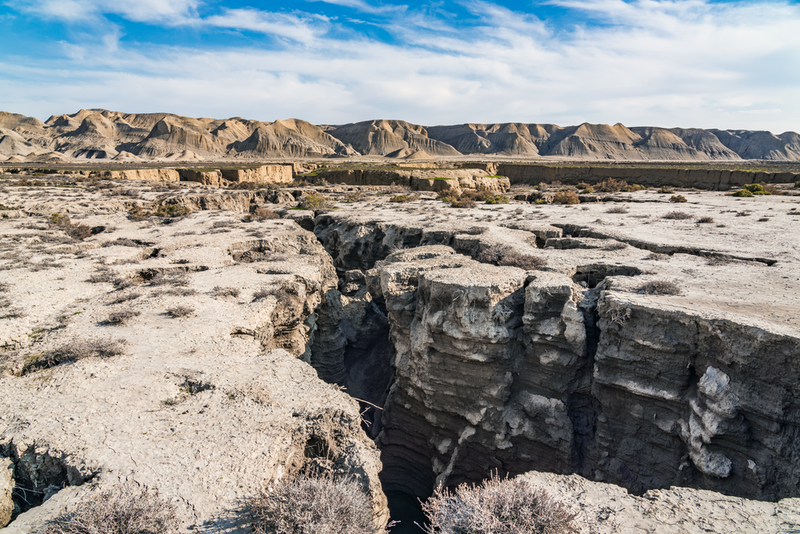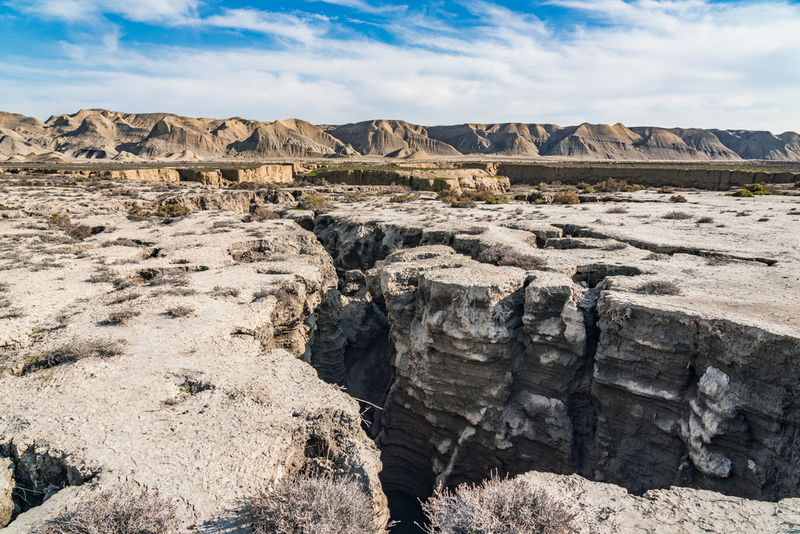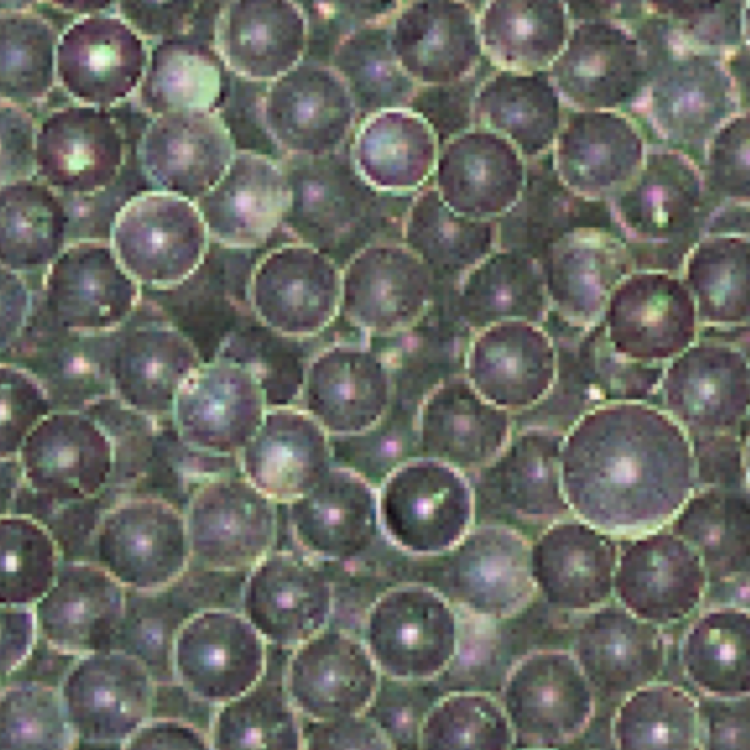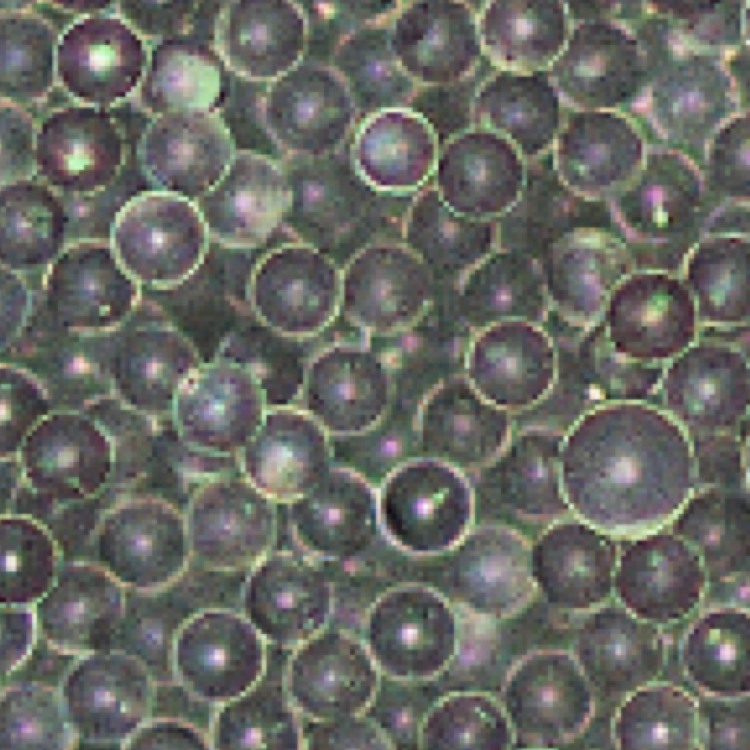Temperature Affects Aging in Granular Materials
Inside a geological fault, small rocks and pebble-sized grains can become increasingly lodged together over time so that the push—or stress—needed to get the granular material flowing grows with time. This frictional “aging” can be attributed to several effects, but researchers have now isolated a thermal effect that appears to be related to molecular-level deformations [1]. The team performed experiments on a bed of tiny beads, or grains, slowly rotating them in a start–stop manner that revealed the signatures of grain aging. The temperature dependence of the effect suggested that the behavior arises from a thermally driven interlocking between irregularities on the grain surfaces. The results could provide new insights into the stick–slip behavior recorded in geological faults.
Granular materials—those made of small particles, like sand or soil—have unique properties. For example, in the polymer industry, the force required to begin stirring granular ingredients on Mondays is greater than on other days because the grains have been left immobile over the weekend. This aging effect, in which the force required to break the network of frictional contacts depends on the time that the particles have been resting, also plays a role in the occurrence of earthquakes and landslides. “The longer you wait, the stronger the granular network becomes,” says Kasra Farain from the University of Amsterdam.
One proposed explanation for aging is that humidity plays a role, with condensed water exerting a capillary force between grains. Another possibility is that the grains rearrange slightly during the resting period, forming a more compact pile. But there is evidence that aging occurs with grains that are dry and unable to rearrange, so other effects may be at work. Farain and his Amsterdam colleague Daniel Bonn have now isolated a thermal effect in a slow-moving granular system.
In their experiment, Farain and Bonn used transparent plastic grains having diameters of around 40 µm. The grains were placed in a disk-shaped container whose bottom plate was fixed but whose top plate was controlled by a rheometer, a device that can exert a precise torque. The researchers first applied a small initial torque that rotated the top plate at a speed of roughly one rotation per day. They then hit “pause” on the rotation by lowering the applied torque just enough that the grains stopped in place without rearranging. The team left the grains “frozen” like this for a resting period that varied between 1 second and several minutes. When the researchers released the pause button and ramped up the torque, they found that more torque was required than initially applied to get the grains moving again. The amount of extra torque depended on the resting time.
Based on experiments performed at various temperatures between 20 and 80 °C, they found that the grains aged faster at higher temperatures. To determine the origin of the temperature dependence, the team performed stress-relaxation experiments in the same rheometer setup. The top plate was twisted a certain amount and then held fixed. The grains initially resisted this twisting—exerting a torque on the rheometer—but over time this resistance decreased. Such stress relaxation has been studied before, and it is known to arise from molecular changes on the granular surfaces that dissipate the stored elastic energy from the twisting. Farain and Bonn showed that the temperature dependence of the stress relaxation matched that of the frictional aging that they’d measured in the same granular system.
The similar temperature behavior implies that the thermal aging effect is also tied to molecular-level deformations. “We assume that when two grains are pushed together, the surface irregularities deform, and this deformation can lead to an increase in the strength of the contact,” Farain says. Such deformations can presumably occur faster when the grains are at a higher temperature.
The researchers think these results could be applied to modeling of fault lines, which are known to go through cycles where the plates switch between sticking and sliding. The granular material in between the plates—called fault gouge—can age during the sticking period. In a future experiment, Farain plans to study whether aging can cause stress to accumulate in the fault over several stick-and-slide cycles.
Eric Clement, a granular materials specialist from Sorbonne University in France, says the researchers’ experiments were executed skillfully, and they complement previous studies of aging that could be applied to soil mechanics and planetary geophysics [2, 3]. He feels that the most important new result is the observed similarity between aging and stress relaxation. “This result points to the centrality of thermal molecular processes taking place at the scale of granular contacts,” Clement says.
–Michael Schirber
Michael Schirber is a Corresponding Editor for Physics Magazine based in Lyon, France.
References
- K. Farain and D. Bonn, “Thermal properties of athermal granular materials,” Phys. Rev. Lett. 133, 028203 (2024).
- V. B. Nguyen et al., “Creep and fluidity of a real granular packing near jamming,” Phys. Rev. Lett. 107, 138303 (2011).
- B. Blanc and J.-C. Géminard, “Intrinsic creep of a granular column subjected to temperature changes,” Phys. Rev. E 88, 022201 (2013).







